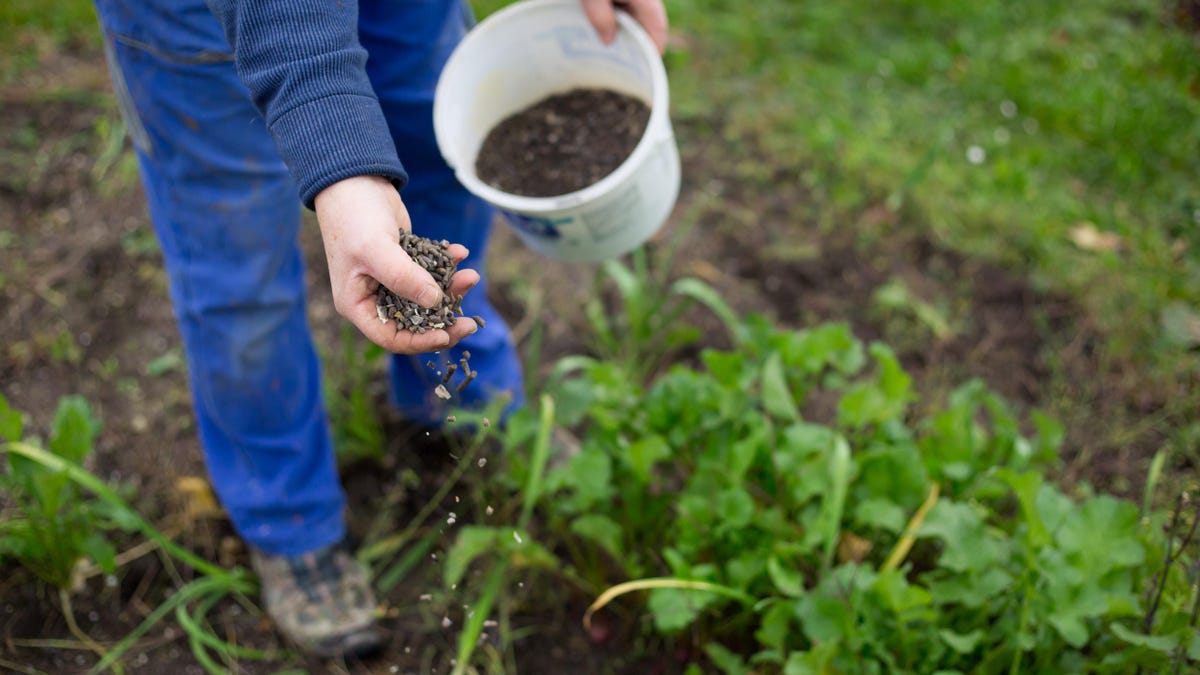How to Choose the Best Fall Fertilizer for Everything in Your Garden

Autumn is one of the three seasons when fertilizers are applied. When plants are ready to wake up in spring, you surprise them with a nitrogen-rich plant food to help them grow; In the summer, you give them more phosphorus and potassium to give them the brain food they need to grow vegetables, flowers, and fruits. And in the fall, you really give the plants a midnight snack before they go to bed. Like hibernating bears, they need to gain some weight to survive the long winter.
To be clear, the best fertilizer is an off-season cover crop, and there are all kinds of such fertilizers that return nutrients back into the soil as well as improve the actual condition of the soil, such as oilseed radish, which decomposes. solid ground. Constantly checking your soil and adding compost—whether it’s kitchen scraps, leaf mold, or just stuff you buy at the garden center—will also keep your soil healthy. But make no mistake: There are plants in your yard that can benefit from fertilizer formulated for their specific needs.
How to choose the best autumn fertilizers
When you’re looking at fertilizers, it’s sometimes helpful to know that the numbers on the front always represent nitrogen-phosphorus-potassium in that order. As mentioned above, nitrogen promotes foliage growth and phosphorus stimulates root growth. Potassium helps flowers and fruit grow, but it serves another important purpose: plants need to absorb micronutrients like calcium (and if you’ve ever had tomato rot, you know how important that is).
For grass:
If the summer has been hotter than usual, or you’ve turned off the water to your lawn at some point and let it dry out, rain will be a relief. But these blades need food to grow healthy, so 20-8-8 is recommended to give them that boost. The phosphorus contained in the composition will help the grass roots survive the winter. Apply it in September, October and November.
For perennials:
0-20-0, sometimes called “superphosphate”, can be sprinkled around dying perennials; this will help them give extra strength to their roots for the winter since they have probably spent all they have on producing flowers and seed heads. They’ll be back bigger and better next year.
For fruit vines and trees:
All your fruit vines and trees need fall support, and if you’ve had a “blah” harvest, this could be a game changer for you. Particularly look for fertilizers for fruit vines and trees that contain high levels of nitrogen, such as 12-4-8. Apply it as directed, water lightly, and then mulch shrubs, vines, and trees during the colder months.
For trees and shrubs:
No matter how well trees and shrubs are in need of feeding; sometimes I forget that my very large trees still need me. Once bushes and trees are truly grown, they don’t suddenly react to drafts or lack of food, so it’s hard to notice, but it’s important to keep the food (and water) train moving. For these plants, look for a slow-release nitrogen fertilizer in the fall and remember that you’re not only fertilizing the few feet around the tree, but wherever the roots might be, so spread them out.
Lamps:
Bulbs are a long game, but whether you plant them this year or last, you want that superphosphate fertilizer to spread throughout so those bulbs form strong roots and can grow strong stems in the spring.
Plants that need something extra:
There are several plants in your yard—azaleas, rhododendrons, and blueberries—that require more acidic fertilizer to really perform at their best. This is a special fertilizer you can buy, and you should also consider it for hydrangeas, which change color depending on the acidity of the soil, as well as gardenias, camellias and all other finicky woody flowers. In areas where there was very little nitrogen in the summer, such as where you planted corn, you should treat them with blood meal. It doesn’t smell much, but it cleans the soil.
If this sounds complicated, remember that these are just combinations of NPKs – nitrogen (N), phosphorus (P) and potassium (K) – and you can play around with these components, as well as ask your local garden center for help.